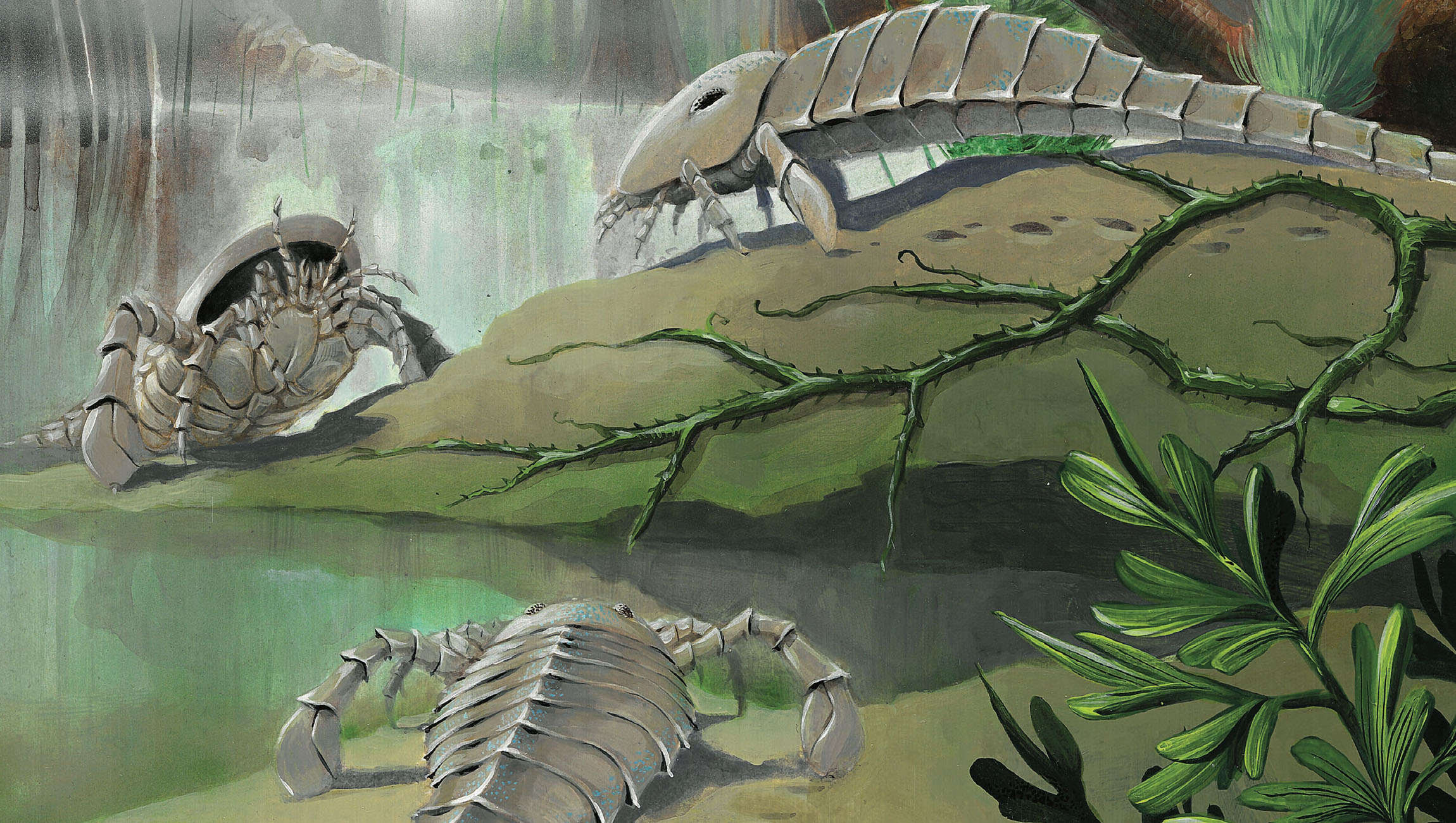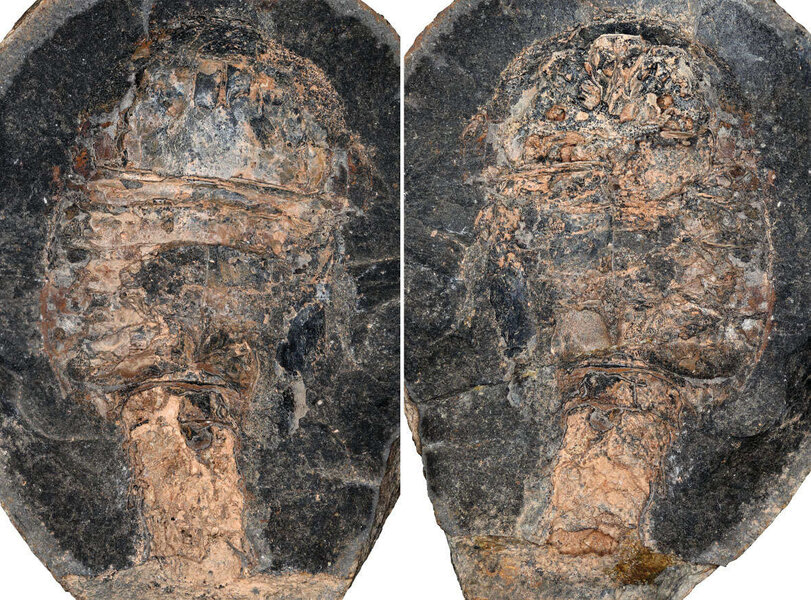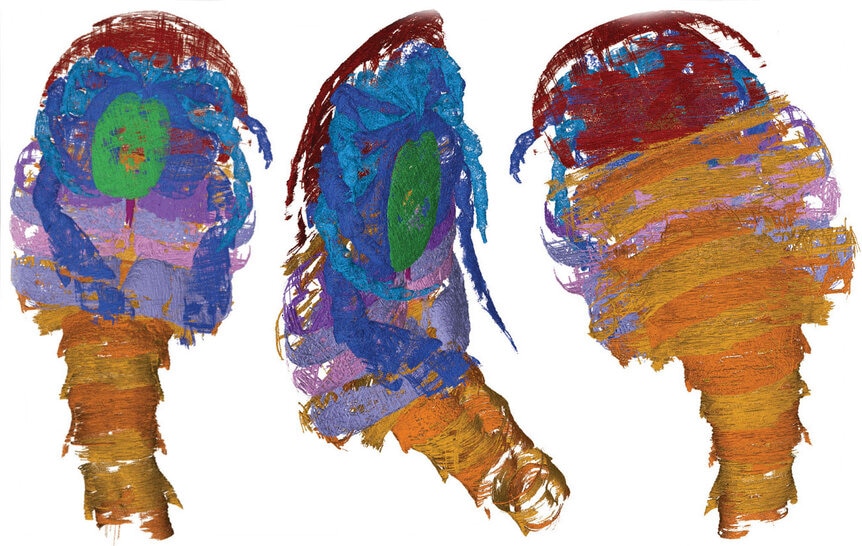Create a free profile to get unlimited access to exclusive videos, sweepstakes, and more!
Sea scorpions almost as big as humans were already crawling to shore 340 million years ago

Anyone who has read Stephen King’s The Dark Tower series will be forever haunted by the huge arthropods that emerged from the sea at sundown, eagerly searching for their next meal (which was two of Roland’s fingers at one point). Those things are not so fictional as they sound.
Sea scorpions that could get close to human size, kind of like the terrifying but unnamed creatures in The Dark Tower, actually existed. At least these ancestors of horseshoe crabs and arachnids, which lurked in Carboniferous seas long before humans appeared, weren’t actually around to take them apart. Using CT scans, scientists at West Virginia University have now “dissected” an exceptionally preserved fossil and found evidence that sea scorpions, or eurypterids, breathed air and would sometimes creep up on land. That would have been bad news for Roland Deschain.
Eurypterids belonged to the group Chelicerata, which includes all arachnids, sea spiders and horseshoe crabs — except chelicerates are thought to have first appeared underwater.
“The earliest possible chelicerates, found in the Cambrian Burgess Shale, are fully marine, and it is from these animals that all other chelicerates are descended,” James Lamsdell, who recently led a study published in Current Biology, told SYFY WIRE.
When CT scans imaged the extinct monster in 3D, however, they revealed an unusual dual breathing apparatus. Their gills were made out of plates connected by columns of tissue called trabeculae. More of these plates were found toward the front of the gill than the back. The eurypterid would have needed more plates toward the back to have gills that were fully functioning underwater, so how it could even breathe was a mystery until the trabeculae in between its gills were investigated. Extant arachnids like scorpions and spiders are known to have trabeculae. The question of how eurypterids breathed underwater then turned into an explanation of how they breathed on land.
Trabeculae held this creature’s gills apart so they wouldn’t collapse when it climbed out of water. Meaning it breathed air. Lamsdell believes that eurypterids would make their way out of the ocean to crawl between shallower pools and lay their eggs where they would be safe from predators that would have otherwise snapped them up in the open ocean. So if these bizarre life forms were somewhere between land and sea, why did some of their descendants end up skittering onto land while others stayed submerged?
“The switch to land for arachnids was probably opportunism more than anything else — at around the time eurypterids were experimenting with moving on to land, the first terrestrial ecosystems were beginning to be established,” Lamsdell said. “Plants and fungi were common, but animals were only just getting a foothold.”
Arachnids had the advantage of being some of the first terrestrial predators, which gave them the opportunity to create a niche for themselves before anything else could rival them. Anything that traps its pray in the sticky threads of a web or stabs it with the giant sting on the end of its tail is not going to be too appetizing to other hungry creatures, except maybe the ruthless but often reckless honey badger. Horseshoe crabs continued to thrive in water as predators and scavengers. They somehow made it, escaping the jaws of toothy fish and dodging several mass extinctions, even though only a few species would exist at a time. Humans are now their only real threat.
Though eurypterids have been extinct for millions of years, their traits live on in horseshoe crabs and arachnids. They had creepy compound eyes on either side of their heads that were passed on to horseshoe crabs. That is hardly nightmare fuel compared to their back legs, which were shaped like paddles at the ends for swimming, but at the base were basically medieval torture devices. Built-in spikes that were used to grind up whatever unlucky prey was caught in them before the eurypterid would move that food to its mouth.
The terrestrial descendants of eurypterids also echo their ancestors in some ways. Arachnids fuse the underside of their body, an evolutionary transition that facilitated breathing and hunting on land. Lamsdell is fascinated by the sea scorpion’s evolution and is looking to find out more.
“Eurypterids are an excellent study group as we are learning more about their development and we also know that they moved from marine to freshwater environments as they evolved,” he said. “So I am interested in finding out how this environmental change impacted their evolution.”
At least these things or anything like them won’t wash up on the beach or anywhere else outside the imagination of Stephen King. Just imagine if you were wading in the surf around sunset, only to have gargantuan sea bugs snapping at your heels.
















